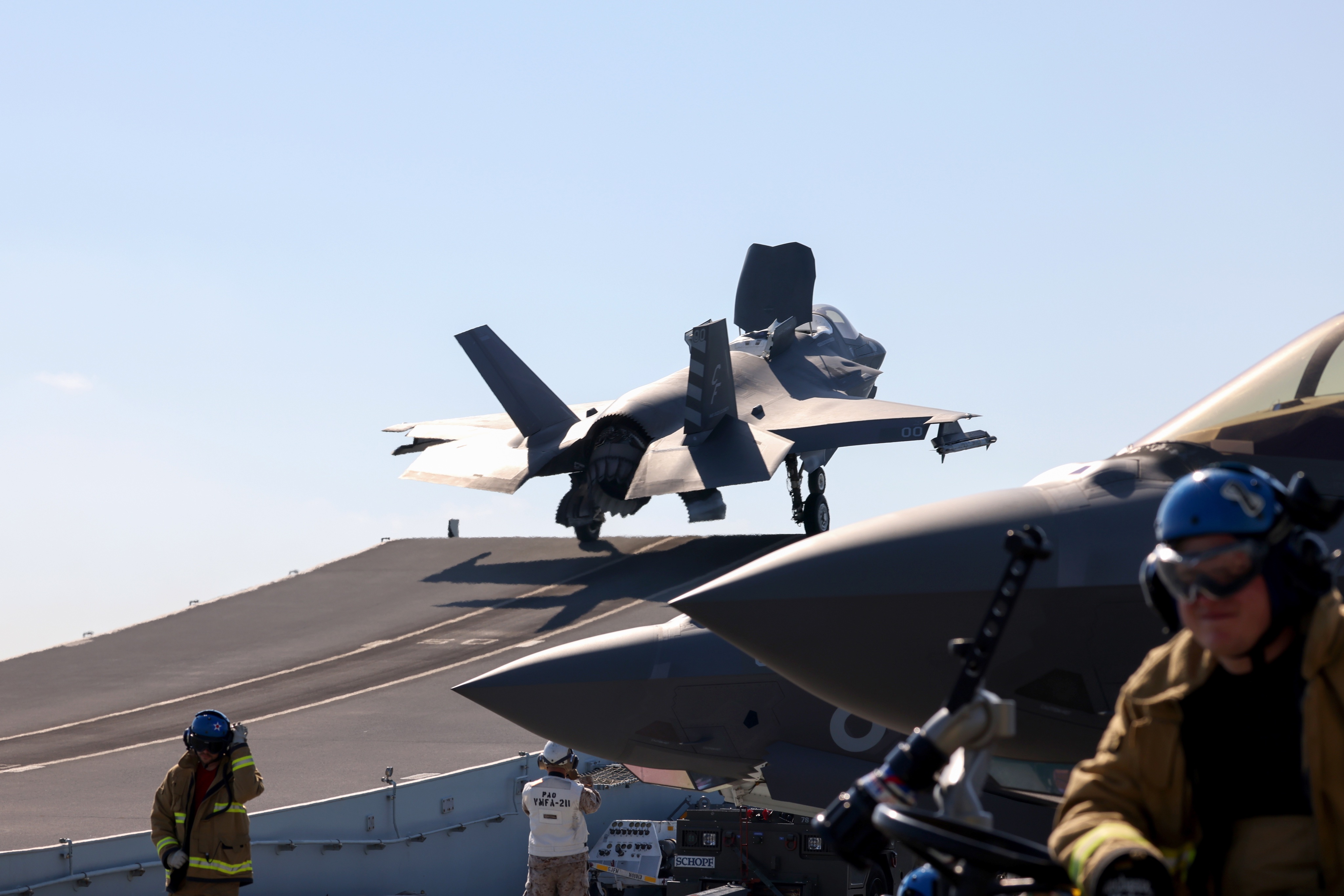The US Air Force (USAF) in February this year admitted before the government that the highly advanced F-35 is a failure. Riddled with cost overruns, high life-cycle expenses, maintenance issues, and a host of technical deficiencies, the stealth jet – along with other failed projects like the Zumwalt and the Littoral Combat Ship (LCS) of the US Navy – have become a liability.
This is amidst a US military revamping fundamental doctrinal concepts that were found wanting in a return to conventional great power rivalry, after decades of fighting non-state actors.
The F-35 evolved as an international Joint Strike Fighter (JSF) program spearheaded by the US Department of Defense (DoD) and aerospace giant Lockheed Martin, where multiple nations participated in developing components and parts.
The USAF’s primary need was to replace the aging F-16, the F-15C/D, and the F-15E Strike Eagles, with a high-end fighter.

The old airframe of the Fighting Falcons and the Eagles were found to be non-upgradable beyond a point with the latest avionics requirements of the age.
On February 22, General Charles CQ Brown, the USAF chief, termed operating the F-35 as “(having to) drive your Ferrari to work every day.”
US Media Flagged Concerns
Earlier in June 2019, the US media had highlighted 13 critical deficiencies of the F-35 that included a deficient cockpit pressure regulation system that caused extreme sinus pain; the night vision camera of the Helmet Mounted Display showing horizontal green lines; the North Grumman AN/APG-81 Active Electronically Scanned Array (AESA) radar that was unable to scan a wider area; and an “inaccurate” 25 mm gun on some of the variants that also caused “vibration stress” on the airframe.
Chinese PLA’s Y-9 Aircraft Tasked To Secure India-China De Facto Border ‘Creates Aviation History’
These were identified as the remaining four ‘Category 1’ deficiencies by the F-35 Joint Programme Office, which had originally listed a total of 13 such defects.

By the beginning of this year, the aircraft’s Pratt & Whitney F-135 engines were “overheating” to crack their fan blade coatings – now assumed to also affect the more complex engine of the F-35B.
The F-35B is the Short Take-Off/Vertical Landing (STOVL) variant with a variable thrust to operate from aircraft carriers.
Each engine for the F-35A, the Air Force variant, costs approximately $10.8 million; the more complex engine for the F-35B costs $24 million. The plane itself costs a minimum of $80 million per unit, making it the costliest fighter jet in the world so far.
Engine and Equipment Troubles
While Defense News estimates say 5 to 6% of F-35s to lack engines by 2022, Bloomberg has predicted 20 percent of the Air Force’s F-3As to be grounded by 2025. This is not to mention the 850 Category 2 deficiencies that the F-35 Joint Program Office (JPO) is tracking.
Analysts say that DoD and Lockheed tried to get the F-35 to do too much, making it overly complex, adding to costs, causing delays, and therefore allowing time to add more capabilities that triggered a vicious cycle.
US Military’s ‘Highly-Secretive’, ‘Game-Changing’ Super Weapon To Be Unveiled; Experts Call It Warning To ‘Adversaries’
By July this year, the head of the JPO, Lt Gen Eric Fick, reported 46 F-35s worldwide to be in ‘Mission Impaired Capability Awaiting Parts’ (MICAP) status. These included 41 USAF F-35As, one Navy F-35C, one Marine Corps F-35B, and three more international F-35 customers.

The United Kingdom, Italy, Canada, Australia are some of the development partners, while Israel, Japan, South Korea, Belgium, and Singapore being the Foreign Military Sales (FMS) customers. Turkey, which was a development partner, was dropped from the program in retaliation to Ankara purchasing the Russian S-400 surface-to-air missile (SAM) system – deemed to compromise the F-35’s stealth capabilities.
This is not to mention spare parts supply issues stemming from database/logs management defects in the Autonomic Logistics Information System (ALIS).
Meet One Of World’s ‘Weakest Air Forces’ That Boasts Rafale, Typhoon, F-15EX Jets & Now Eying F-35 Stealth Fighters
This was further worsened by Turkey’s ouster from the program which led to DoD and Lockheed struggling to find alternative sources for around 900 components that Ankara’s defense industry was contracted to manufacture. This was not just for Turkey’s planes but the entire F-35 fleet worldwide!
The DoD has faced “excess costs” of $300 million since 2015, owing to failure to deliver parts. The ALIS logs detailed data of a part’s history, service life, and location from the manufacturer to the end-user.
However, not every F-35 parts manufacturer used ALIS or maintained data in standardized formats, leading to parts arriving with incomplete or incorrect information, according to a Government Accountability Office (GAO) report in 2019.
India Fast-Tracks Its Stealth Fighter Program; Incorporates Key Russian Tech Missing In Western Jets
The F-35 symbolizes a broader issue with the US Military-Industrial Complex (MIC) itself. If inducing wars through its political influence and threatening domestic security with easy availability of guns were not enough, the MIC’s business interests are now hurting the US’ defense preparedness itself.
It busts the “efficiency” associated with privatization, as America’s traditional rivals, Russia and China, have been found to be more than prepared with world-class military equipment, built by their state-run defense industries.
- Parth Satam is a Mumbai-based journalist who has been covering India’s defense sector for more than a decade. He maintains a keen interest in defense, aerospace and foreign affairs and can be reached at satamp@gmail.com
- Follow EurAsian Times on Google News




